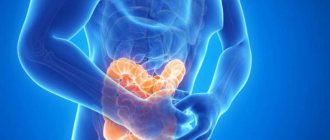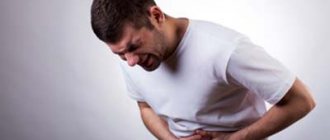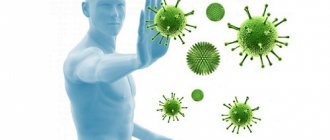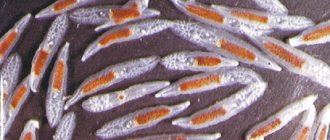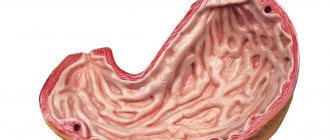Spastic constipation
Spastic constipation is characterized by irregular defecation delays. During disruption of the colon, both normal bowel movements and loose stools are observed. To determine the type of stool retention, you need to know its signs.
Spastic constipation is associated with a number of functional pathological processes that contribute to the occurrence of disturbances in the activity of the autonomic nervous system
Spastic constipation is associated with a number of functional pathological processes that contribute to the occurrence of disturbances in the activity of the autonomic nervous system. The causes of spasms in certain areas of the large intestine can be endocrine and neurovegetative diseases, the use of strong laxatives, an unbalanced diet (an abundance of spicy and protein-rich foods without the proper amount of fiber in the diet), dehydration, as well as severe nervous shock.
The following symptoms of spastic constipation are distinguished:
- sharp pain in the lower abdomen, similar to colic;
- difficulty defecating;
- the presence of mucus in the stool;
- decreased appetite;
- headache;
- fatigue;
- increased irritability;
- hard feces
Spastic constipation treatment
Spastic constipation occurs due to excessive irritation of the intestines, which can be caused by inflammatory processes, diseases of neighboring organs, painful bowel movements (for example, proctitis or colitis with constipation - the treatment in these cases is similar), which interferes with the movement of feces.
When spastic constipation is diagnosed, treatment involves restoring proper intestinal motility, for which antispasmodics, diet, and soft tablets for constipation are prescribed. The first thing that should be achieved as part of therapy is restoring normal intestinal motility. A number of activities are being carried out for this purpose.
Relieving intestinal spasms during spastic constipation

To do this, you can use various antispasmodic drugs (only after consulting a doctor) and external methods (for example, paraffin and pine compresses, warm baths, etc.). When conducting them, it is necessary to monitor the patient’s condition and be guided by his feelings.
Using laxatives to treat crampy constipation
After the intestinal spasm is relieved, you need to gently remove feces from the body. To do this, you can use a laxative, which can make defecation easier. These are MICROLAX® microenemas. The convenient release form allows you to use the drug without complicated preliminary preparation.
There are many laxatives that help with constipation. But before taking pills and mixtures, it is worth remembering that all medications for the treatment of constipation help cope with their symptoms without eliminating the cause of the disease.
Following a special diet to treat spastic constipation
The patient should switch to easily digestible foods - boiled meat or fish, pureed vegetable and fruit dishes, yogurt or kefir, fiber-rich foods, etc. The menu must also include products containing beneficial lactic acid bacteria: yogurt, kefir.
Take probiotics, which normalize intestinal microflora. Do not forget about products that have long been known for their laxative effect - prunes, dried fruits, tangerines, figs. Prunes are especially useful for constipation, which can be consumed in the form of decoctions, infusions, purees, etc. Another mandatory point is how to treat constipation with proper nutrition: you need to drink at least 1.5 liters of water per day.
Diet and nutrition
After a course of treatment for spastic colitis, the patient must adhere to certain dietary rules to prevent re-exacerbation:
- Small meals up to 5 times a day.
- Refusal of spicy, fatty, fried foods.
- Exclusion of products that promote active fermentation (yeast bread, cabbage, cucumbers, tomatoes, juices, carbonated drinks, alcohol, etc.).
- Increasing the percentage of fresh vegetables and fruits in the diet. It is advisable to limit the consumption of legumes and cabbage, fruits high in sugar and industrial fruit juices.
- Instead of milk, it is advisable to use fermented milk products and consume them in the afternoon.
- Avoid products with preservatives: the longer the shelf life, the higher the risk of irritation. Industrial yoghurts with a shelf life of about a month should be replaced with homemade ones, industrial canned food, sausages, etc. should be abandoned.
It is preferable to include whole grain bread and pasta, boiled fish and meat, fermented milk products, etc. in the diet.
Just following a diet can help completely eliminate spastic pain without taking special medications.
Spastic constipation symptoms
It should be remembered that daily bowel movements are not necessary. A one-day absence of bowel movements is not a sign of tract obstruction. The main symptom of spastic constipation is regular cramping pain in the lower abdomen, predominantly of a spasmodic nature.
Other characteristic symptoms indicating spastic constipation include:
- flatulence and bloating;
- belching;
- unpleasant taste in the mouth;
- loss of appetite;
- weakness of the body and rapid fatigue;
- insomnia;
- paleness of the skin, loss of elasticity.
Symptoms of childhood stool retention are specific. Babies scream in pain, cry, tuck their legs, behave capriciously and restlessly.
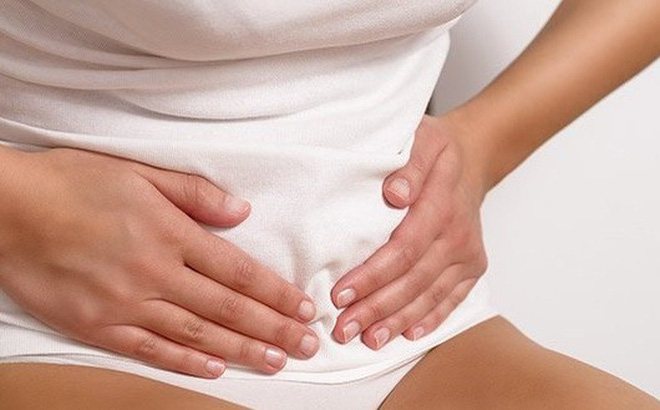
The main symptom of spastic constipation is regular cramping pain in the lower abdomen
Coprostasis is manifested by significant frequency of defecation for up to 36 hours, pain and colic in the abdomen, and tension during bowel movements. With constipation in infants, the stool becomes hard.
Pregnant women experience problems with bowel movements in the early stages. The main reason for difficult bowel movements is discomfort in the abdomen, a feeling of incomplete emptying of the intestines, and a quantitative decrease in stool. For many women, problems persist throughout pregnancy.
Spastic colitis constipation
The etiology of spastic colitis identifies neurogenic factors as the main causes of spasms in the intestines. These can be prolonged stress and fears, regularly occurring conflict situations, hormonal imbalances, and overwork. Apparently, this is why spastic colitis is more common in women, since fluctuations in hormonal balance associated with the menstrual cycle have a significant impact on the emotional state.

About 30% of patients who sought help acquired spastic colitis after acute intestinal infections
About 30% of patients who sought help acquired spastic colitis after acute intestinal infections. Among them, the main ones were salmonellosis and dysentery. The disease is often preceded by dysbiosis, which develops as a result of prolonged antibacterial therapy.
Symptoms of spastic colitis constipation
Spastic pain often occurs in the morning and after eating. Such colitis is manifested by a sequential alternation of spastic constipation and diarrhea. Patients report bloating, flatulence (high levels of gases in the intestines), and pain in the colon. Constipation is replaced by diarrhea with liquid or pasty stools. In severe cases of the disease, mucus or blood appears in the stool.
A diagnostic examination reveals other symptoms of spastic colitis: hyperemia of the walls of the colon, swelling. Palpation of the abdomen allows you to identify spastic constrictions, which are large painful areas.
Spastic constipation in adults
Spastic constipation in adults is a very common pathology; it is found in 30–50% of adults. Elderly people are more susceptible to spastic constipation. During pregnancy, spastic defecation difficulties are observed in 70-80% of women, and in 30% they persist in the postpartum period. Spastic constipation in adults can be acute or chronic.
Depending on the severity of clinical manifestations during spastic constipation in adults, three stages are distinguished:
- compensation: defecation occurs once every 2-3 days;
- subcompensation: bowel movement once every 3–5 days;
- decompensation: delay in defecation for 10 days or more.
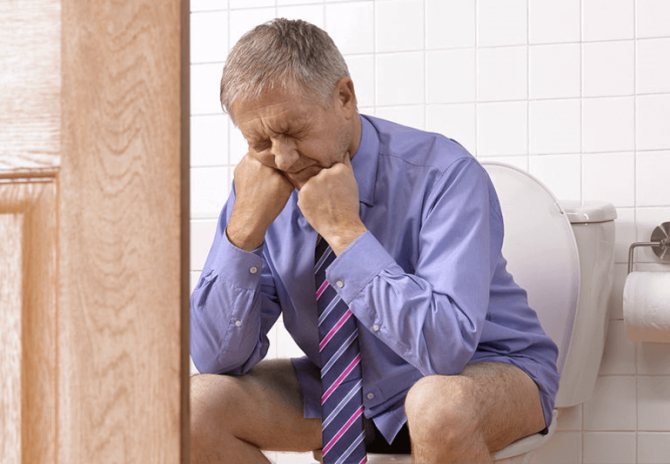
Spastic constipation occurs due to spasms of muscle tissue in certain parts of the intestine, as a result of which feces accumulate and move with difficulty in the intestinal cavity. The most common causes of spastic constipation in adults are endocrine diseases, increased tone of the intestinal walls, and stressful conditions.
Spastic constipation is characterized by the absence of pain during defecation, but it is accompanied by bloating, heaviness in the abdomen, a feeling of fullness, flatulence, and intestinal spasms (colic). Fecal masses during defecation are released in an insignificant volume, while long-term stool retention may not be recorded.
Feces often take the form of small hard lumps (the so-called sheep feces), in addition, feces can be ribbon-shaped, cord-shaped, bean-shaped, and an admixture of mucus is often found in the feces. With spastic constipation in adults, a small amount of feces is excreted.
In addition, patients complain of weakness, fatigue, increased irritability, and persistent headaches. The color and appearance of the skin changes, the skin acquires a yellowish tint, becomes pale, flabby, and loses elasticity.
Medical definition of coprostasis
Even experts cannot yet decide what to consider coprostasis: an independent disease or a symptom of other diseases. WHO (World Health Organization) classifies it as a disease, and the world's leading gastroenterological associations insist that coprostasis should be considered as a symptom.
Acute constipation in medicine is the absence of bowel movements for a long period - at least 2 days. It can appear at any age: from infancy to old age.
Enema for spastic constipation
Persistent constipation can be treated by using an enema, which can be cleansing and medicinal. Cleansing enemas mean introducing 1-2 liters of cool water into the rectum. Bowel movement occurs within 10 minutes after the enema is administered, after which several more urges to defecate may occur at short intervals.
Such an enema for constipation, along with feces, washes out all the beneficial bacteria from the intestines, which cannot be done with constipation or dysbacteriosis, therefore a medicinal oil enema is considered much more gentle.
Does exercise help?
Regardless of the cause of any constipation, physical activity should not be discounted.
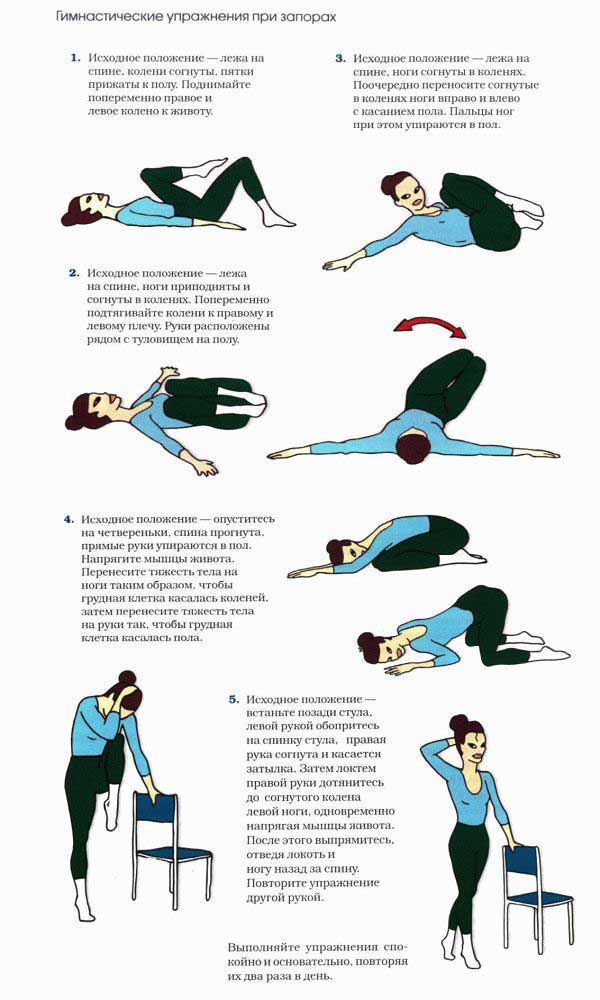
There are special exercises that improve intestinal motility and have a beneficial effect on the general well-being of the patient.
Even including a half-hour jog or walk in the program can normalize bowel movements.





